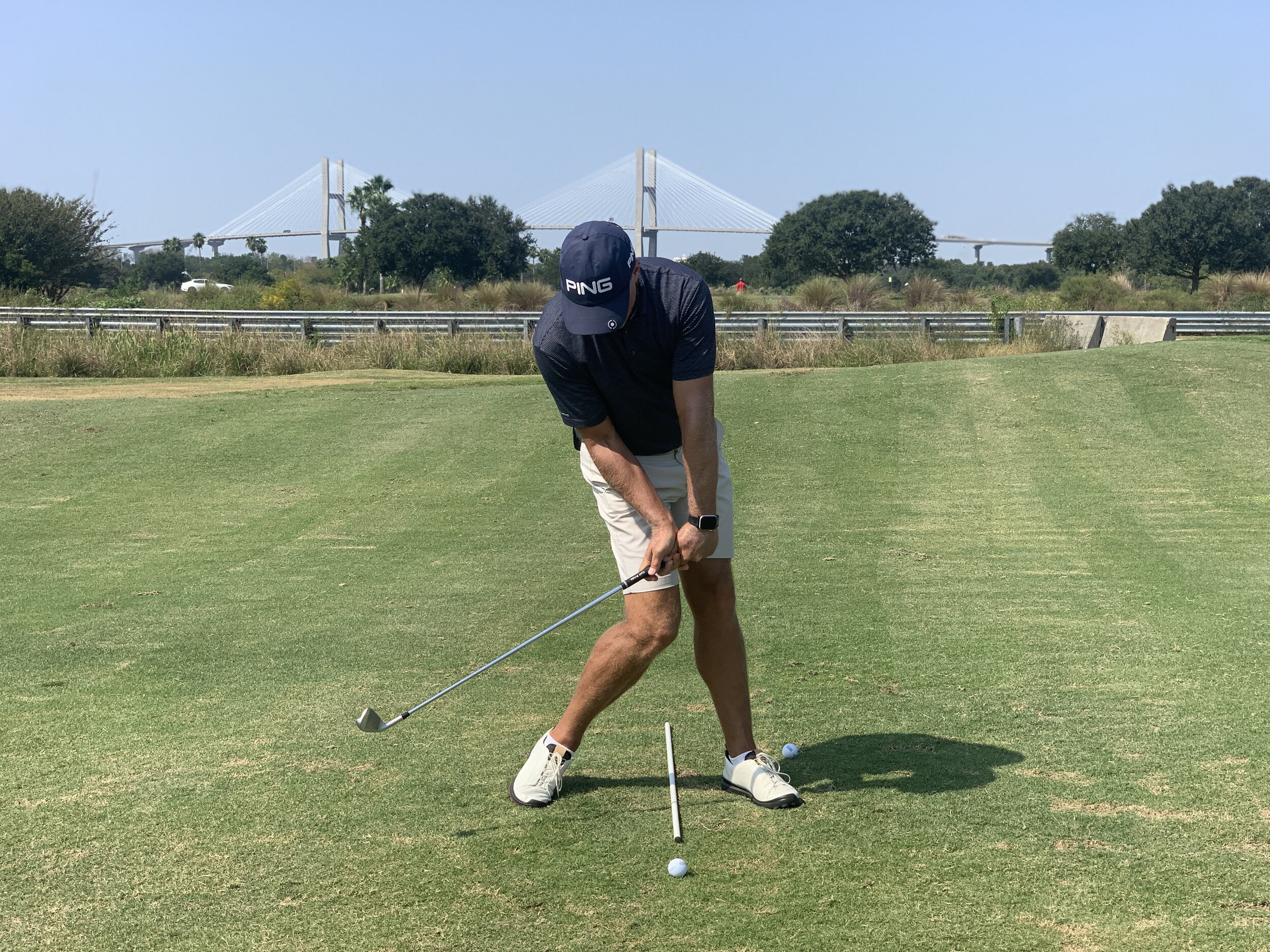Try This for Better Compression
/Too many golfers that I teach are struggling to compress the golf ball! There is a distinct lack of energy being transferred from the clubhead to the ball. Getting the club face in position in the early part of the downswing is tremendously helpful in increasing compression and the sizzle factor off the face. Here’s how…
When trying this drill look for the following:
Don’t try to hit balls with this - it’s all about getting the correct feel
Hold the club at the bottom of the grip in your lead hand with the clubhead well off the ground
As you get to the top you should see the handle out in front of your forearm
Doing this drill correctly will ensure that you’re getting both the club face and the clubhead in a good spot to initiate the downswing without having to work hard to shallow the club or lay the shaft down.
This should be your view when you have the club at the top of the backswing. Give it a try and see if you can incorporate the feel into your next practice or warm-up session.
Thanks for reading/watching along and it is my wish that somehow I can manage to share something that helps you experience more joy while you’re out on the links.
Cheers!



















